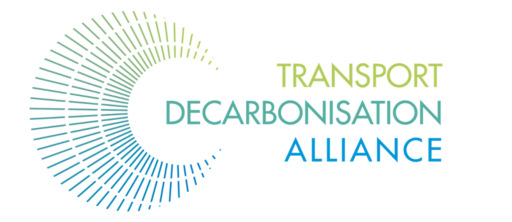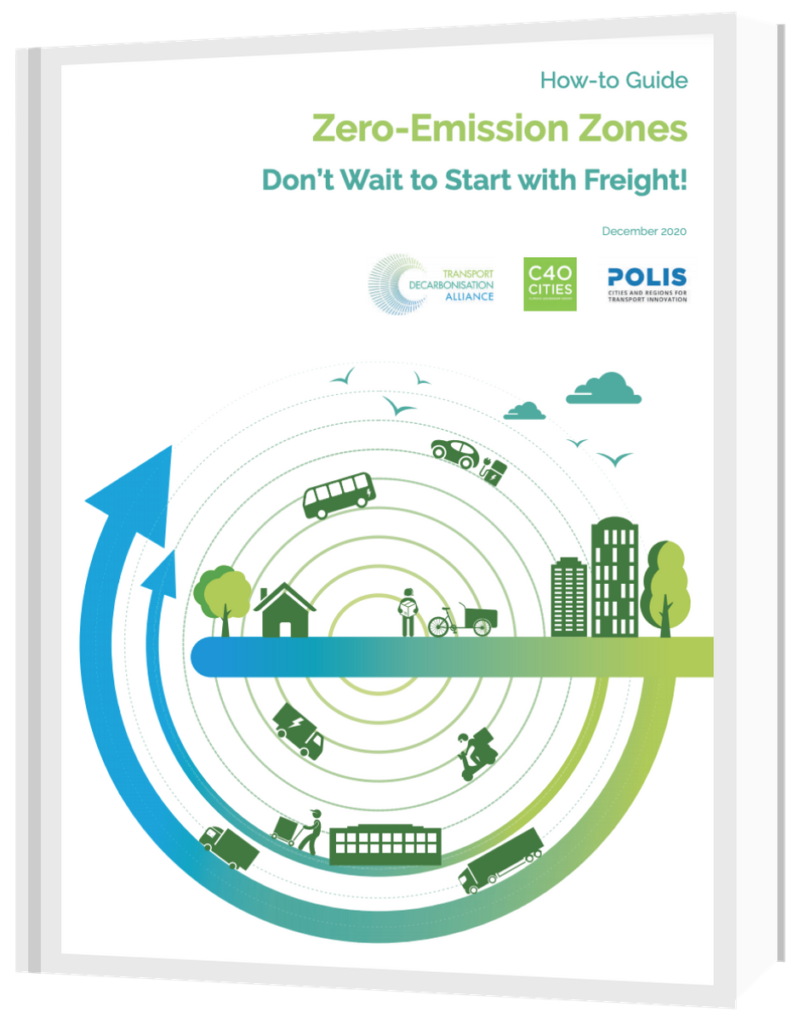URBAN FREIGHT

THE NEED FOR ZERO-EMISSION ZONES FOR FREIGHT
More than half the world’s population now lives in urban areas, and cities continue to grow. The current freight system intensifies many urban challenges: congestion, traffic safety, noise pollution, air pollution, and greenhouse gas emissions. Yet too often city planners and transportation officials overlook the impact of freight. As cities around the world seek to reduce their carbon footprint, many are now devising zero-emission zones (ZEZs) for mass transit and personal mobility. But while urban freight produces a substantial share of pollution and CO2 emissions, few cities and countries have developed a vision and implementation pathway specifically for the freight sector.
Zero-emission zones for freight (ZEZ-Fs) are areas in cities where only zero-emission delivery and freight transport vehicles may enter. ZEZ-Fs can make significant contributions to the urban environment.1 They can help cities achieve important goals including less congestion, cleaner air and lower greenhouse-gas emissions.
Developing ZEZ-Fs can also provide a clear signal to vehicle makers to accelerate the mass production of zero-emission freight vehicles.
The many benefits of ZEZ-Fs lead transport-decarbonization frontrunners to say: Don’t wait to start with freight!
Updated How-to-Guide -
Zero-Emission Zones in the City:
Don’t Wait to Start with Freight!
1st Version: How-To Guide
Zero-Emission Zones for Freight!
URBAN FREIGHT MATTERS
Cities are at the core of human life. Increasing urbanisation and high population growth, in combination with complex demand patterns, create continuous pressure on urban areas around the world. Although the topic is often overlooked, it is at the heart of numerous urban challenges, such as traffic safety, congestion, air pollution, noise and contribution to CO2 emissions. A realistic and impactful objective is to start by addressing freight-related challenges, with a focus on zero air pollution and significantly contributing to the greenhouse gas (GHG) goals set in the Paris Agreement. It calls for the development of alternative ways to deal with this topic and resolve to widely implement sustainable solutions.
CHALLENGES IDENTIFIED
Transforming urban freight to zero emissions faces several challenges:
- Structural: high operational complexity in an urban context, high fragmentation of the freight sector and low margins.
- Ownership: the responsibilities of Countries, Cities/Regions and Companies are often unclear with regard to who should take the lead in “cleaning” transport, combined with a reluctance to share data.
- Economical/technical: a lack of economically viable solutions and zero emission freight vehicles on the market; a lack of economic incentives to upgrade fleets and change to other green logistics solutions, such as rail, electric cargo bikes and autonomous vehicles.
This Community of Interest (CoI) aims to tackle those challenges that need cooperation from the Countries, Cities/Regions and Companies, through a collaborative rather than an individual approach.
WORKPLAN OF COI ON ZERO EMISSION URBAN FREIGHT
The first and longest running CoI of the TDA is on Urban Freight. It was launched in November 2018 and is led by Dr. Verena Ehrler, lecturer and researcher at Université Gustave Eiffel.
COOPERATION IS KEY
Further cooperation between the Countries, Cities/Regions and Companies is required to transform urban freight. Not only is there a need for sustainable technical solutions (electric vehicles, shift to urban rail, boat, cargo bikes, etc.) but also for stakeholders to cooperate, creating new urban freight rules and business models for the sector. This might include sharing data to create transparency, enabling green decision-making and stimulating innovation. Solutions will always have to be tailored to individual urban areas and supply chains, but there are some common denominators.
ACT NOW
Frontrunners in the Community of Interest on Urban Freight are making it happen. They are already on their way to zero emission urban freight and have numerous solutions for some of the challenges they face. For the remaining challenges they voice what needs to change and advocate action. For example:
- National legislation. Set the overall ambition for zero emission. For example, “All new urban freight vehicles sold from 2030 onwards must be zero emission.”
- Company targets: Setting long-term environmental targets combined with short- to mid-term targets, including robust accounting systems and measurement planning. Public reporting (e.g. through Corporate Responsibility (CR) Reports and/or Annual Reports) and a strong commitment from the board will help create transparency and reach the targets.
- An Sustainable Urban Logistics Plan (SULP) for each city. Looking at a tailor-made solution for each city, considering multimodal zero emission solutions (zero emission vehicles, rail, boat, cargo bikes, city hubs) and building new logistical chains based on data sharing and integration for a liveable and future-proof urban area.
- Set a clear goal: Zero Emission Freight Zones in all frontrunner cities by 2025. Not only will this decrease pollution levels, it will also be a strong signal to the automotive industry to produce clean freight vehicles in larger quantities AND will force a shift to a different (data driven) way of transporting goods.
- The Alliance send a clear message to the automotive industry that more and cheaper zero emission freight vehicles should be produced, faster. All frontrunners will sign a declaration of intent, urging the automotive industry to produce more zero emission freight vehicles, faster. The Countries, Cities/Regions and Companies will indicate the number of vehicles (both trucks and vans) they would be interested in purchasing (if available). This sends a clear message to the automotive industry that there is already a widespread demand. It also demonstrates the collaborative power of the Countries, Cities/Regions and Companies – although the issue affects all the constituencies individually, they need to work together to get results.
WHITEPAPER ON ZERO EMISSION URBAN FREIGHT
The whitepaper shows the major challenges and existing solutions to overcome them, such as the structure of the urban logistics sector, the ownership issues, and the lack of efficient implemented solutions. Each challenge is fully documented with identified solutions (aligned with the proposed methodology) and practical examples of real situations with implemented solutions. As well as proving their feasibility, this provides a wide array of knowledge and ideas for Countries, Cities/Regions and Companies. Read the TDA whitepaper here.
CALL FOR ZERO EMISSION FREIGHT VEHICLES
The Community of Interest on Urban Freight developed the Call for Zero Emission Freight Vehicles. Through this initiative the TDA aims to accelerate the uptake of clean, emission-free good transport. To meet the goals of the Paris Agreement on Climate Change, countries, cities and companies must work together, so please join us in the Call for Zero Emission Freight Vehicles. You can sign the call here.
WEBINAR ON CO2 MEASUREMENTS
The Community of Interest on Urban Freight shared 2 best practices that show that CO2 measurement IS possible and already happening now.
WEBINAR WITH C40 ONZERO-EMISSION FREIGHT ZONES
This webinar showcases the work taking place in the Netherlands to accelerate the transition to zero emission freight. Hosted jointly by C40 Cities and the Transport Decarbonisation Alliance (TDA), it brings perspectives from cities, the national government and businesses on the roles that each party can play to support the roll out of zero emission zones for freight by 2025. Find more information here.

